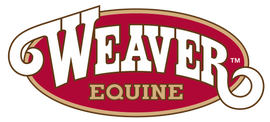
Determining Diagonals
“Today I’m going to teach you about diagonals and how to properly post the trot using your correct diagonal. Do you know what a diagonal is? No? That’s ok, let me explain…” …It was the first thing I asked my student as she mounted her horse that day.
During a recent lesson, I opened with this question to which I got a blank stare and a quiet “not really”. I then proceeded to tell my student all about diagonals and posting. She has gotten to the point in her riding where she can start to learn to be correct and to be correct in all aspects of her riding, starting with posting. But as we worked through our lesson, it came to my attention I couldn’t really explain the reason, or importance, of WHY you should post on the correct diagonal and WHY it is important. I just knew HOW.
A few days ago I was sharing with Chad the progress of my students and that same topic of diagonals came up. Mid-discussion, Chad asked me, “So why does it matter to post on the correct diagonal?” With my growing up with a primarily English background and riding in Pony Club, things like correct diagonals never seemed that strange to me. I had never questioned it because it was just second nature to be on the correct diagonal. But I decided I would do some research and finally figure out the big question of WHY being on the correct diagonal is so important in how we ride.
While reading on the matter at hand, my notes boiled down to two determining factors on why posting the correct diagonal is beneficial. They are: Balance and Conditioning.
- Let’s start with Balance…As we all know the trot is a two-beat, diagonal gait; with the horse’s inside fore and outside hind hitting the ground together, and the outside fore and inside hind coming down for the second beat. A horse drives forward from behind causing his hind end to push each stride, in turn the same fluid movement pushes the rider up into the post. Although we were all taught “rise and fall with the leg on the wall” by checking the outside fore leg for your diagonal, your attention should really be focusing on the hind legs as that is where the power is coming from. (This is why you must learn to feel it, not see it.)
Turning is something you must pay careful attention to when focusing on the balance of your horse. When you turn your horse the inside stride shortens while the outside stride lengthens. This causes the inside hind leg to bear the majority of the weight as the outside steps out with a bigger stride. When you are practicing correct diagonals in the turn, you will rise as his inside hind leg comes forward, to take a little weight off of the leg that is already bearing more weight. In the end this develops a more balanced horse.
- Secondly, how will posting the correct diagonal determine the physical conditioning of my horse? When you are setting out to trot long distances in a straight direction, either for the exercise of your horse or to go do a job on the ranch, your diagonal still matters. The beat you continue to sit on will still be working harder than the beat you rise on as it is bearing more weight. So going several miles on a straight line should become second nature to you to alternate your diagonals in order for both hind legs to be worked equally. Whether at a collected canter for a hunter jumper, an all out gallop for cross country, the amazing athleticism of a cutter, or the finesse of a reiner- the way you determine your diagonals at the trot will affect the condition of your horse in the long run. As Ken McNabb always teaches “That what I do on one side, must also do on the other.” (In other words, by being correct with your diagonals every time and in each direction you will evenly condition your horse.)
I strongly believe that once you understand the mechanics of the diagonal and learn to post on the correct one, you should learn how to FEEL your diagonal vs. LOOKING for it. This alone will raise your horsemanship to a much higher level as you develop that sense of how your horse moves by simply feeling it. And eventually it too will become second nature to you!
Thank you for reading!
Happy Posting!
Christiana of C and C Horsemanship.










